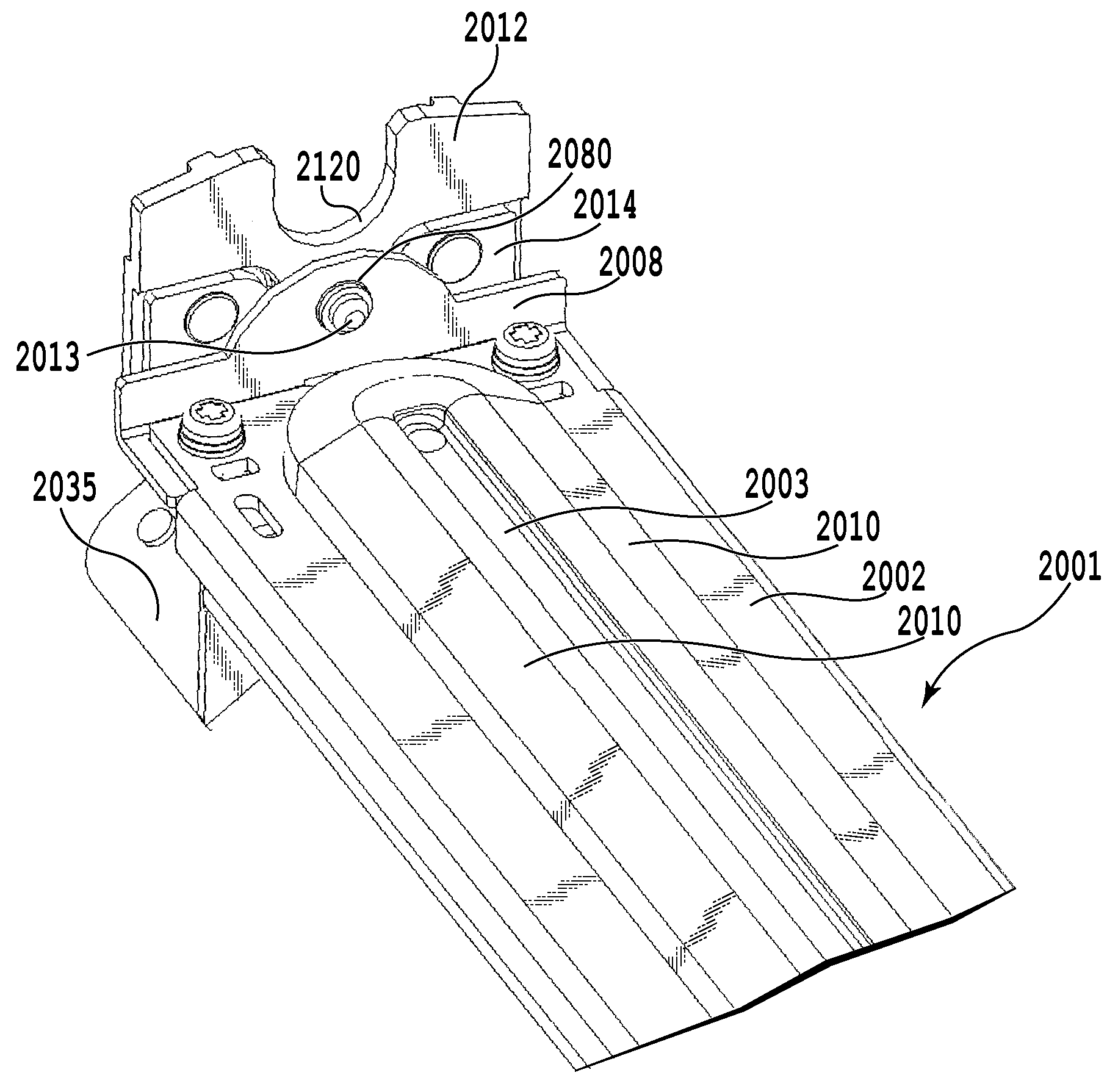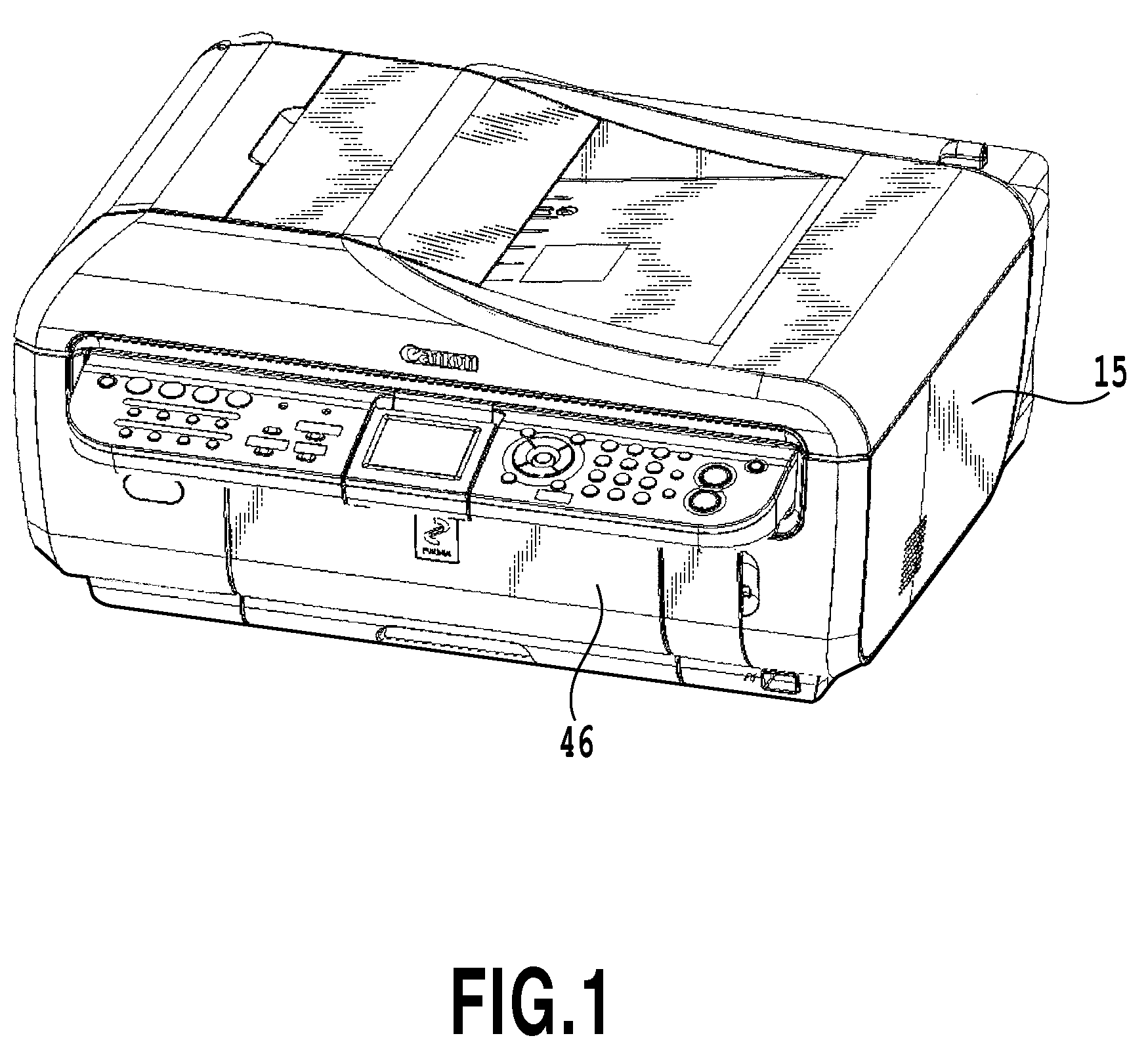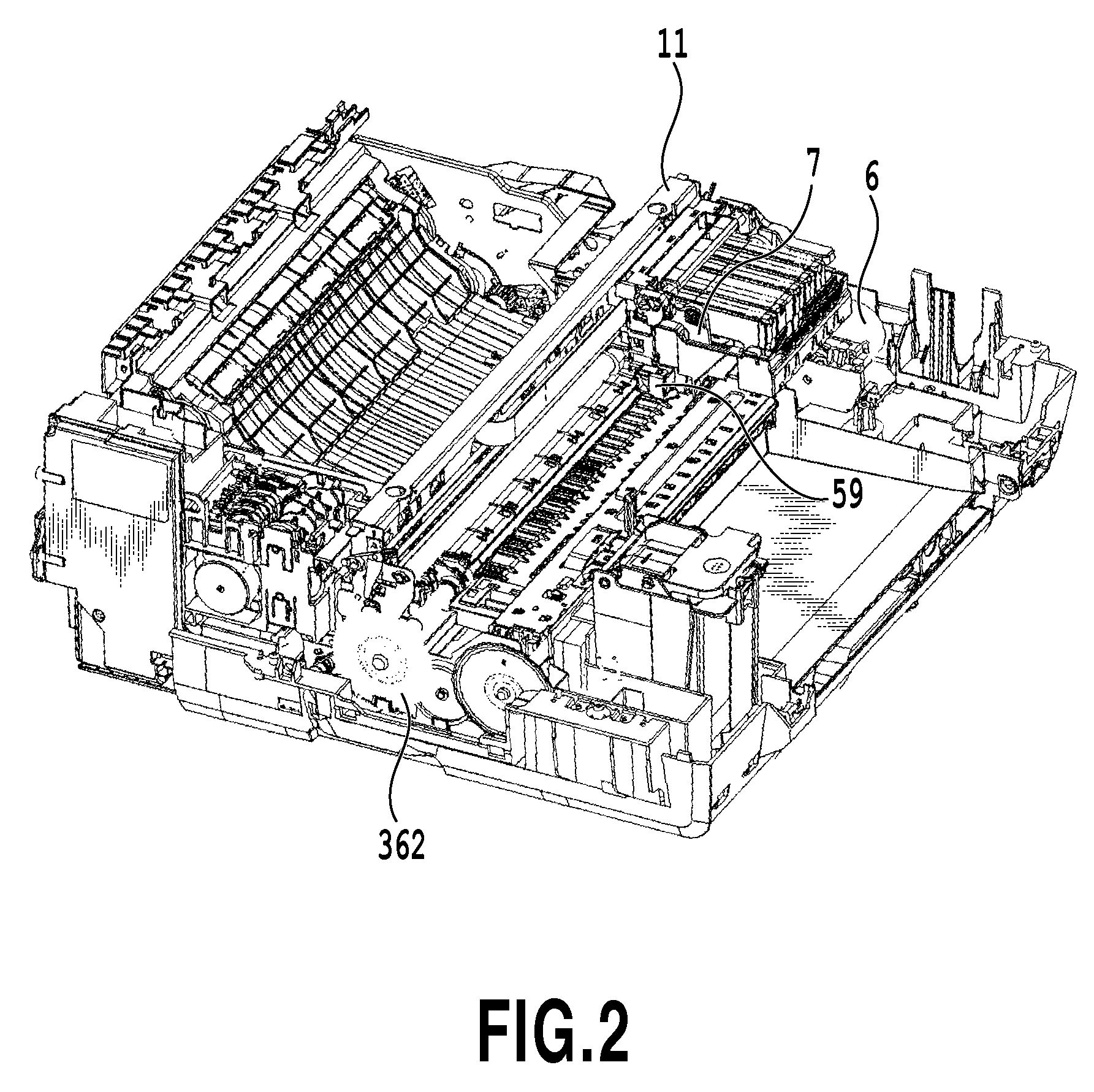Inkjet printing apparatus for applying uniform pressure on an applying roller
a printing apparatus and uniform pressure technology, applied in the direction of liquid/solution decomposition chemical coating, superimposed coating process, instruments, etc., can solve the problems of insufficient contact relationship between the liquid holding member and the printing roller, disadvantageous displacement of the application beads at the application start or end position of each applying medium, and inability to maintain uniform contact pressur
- Summary
- Abstract
- Description
- Claims
- Application Information
AI Technical Summary
Benefits of technology
Problems solved by technology
Method used
Image
Examples
Embodiment Construction
[0031]An embodiment of the present invention will be described below with reference to the drawings.
[0032]The embodiment of the present invention relates to a hybrid machine composed of a document reading device and a printing apparatus based on an ink jet scheme. In particular, the embodiment relates to an ink jet printing apparatus including a liquid applying mechanism which, when a print medium is printed with ink composed of a pigment as a color material, applies the print medium with a liquid for a predetermined purpose such as promotion of cohesion of the pigment.
[0033]FIG. 1 is a perspective view showing an appearance of the above-described hybrid machine. FIGS. 2 and 3 are perspective views of the hybrid machine shown in FIG. 1 and from which an outer case has been removed, the perspective views showing an internal configuration of the printing apparatus as viewed from front left and front right, respectively. FIG. 4 is a vertical sectional view also showing the internal con...
PUM
| Property | Measurement | Unit |
|---|---|---|
| size | aaaaa | aaaaa |
| surface roughness | aaaaa | aaaaa |
| surface roughness | aaaaa | aaaaa |
Abstract
Description
Claims
Application Information
 Login to View More
Login to View More - R&D
- Intellectual Property
- Life Sciences
- Materials
- Tech Scout
- Unparalleled Data Quality
- Higher Quality Content
- 60% Fewer Hallucinations
Browse by: Latest US Patents, China's latest patents, Technical Efficacy Thesaurus, Application Domain, Technology Topic, Popular Technical Reports.
© 2025 PatSnap. All rights reserved.Legal|Privacy policy|Modern Slavery Act Transparency Statement|Sitemap|About US| Contact US: help@patsnap.com



